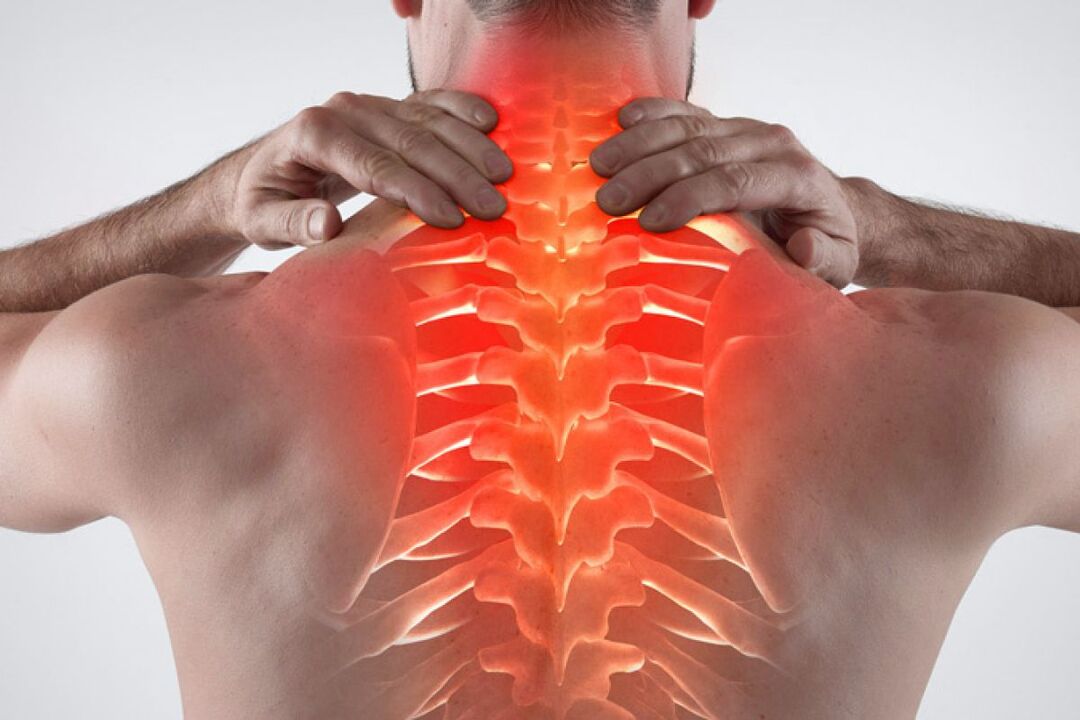Dystrophic, as well as degenerative processes occurring in the human spinal space, usually lead to the emergence of diseases such as osteochondrosis. This pathology can affect one segment of the ridge, or the entire spine. Certain parts of the spine are more often affected, some less frequently.

In the thoracic region of the spine, the vertebrae differ in power, they are larger than the others. In addition, in this part of the ridge there is less mobility, it is subjected to less stress, and the muscles support the skeleton perfectly.
Defeat of osteochondrosis of the chest area is diagnosed more rarely. This pathology usually proceeds with manifestations similar to the symptoms of many diseases and, depending on the degree of destruction of the intervertebral disc, is classified according to stage.
Osteochondrosis of the thoracic region degree 1: symptoms
In patients with early stages of thoracic osteochondrosis, there is a decrease in the elasticity of the disc between the vertebral ridges. Possible protrusion of fibrous rings.
In the early stages of the disease, the following symptoms may be observed:
- the patient experiences sharp penetrating pain. It occurs after physical activity, exercise or lifting heavy objects. The pain is aching, persistent, not intense, accompanied by lumbago;
- as a result of the high load, unexpected capsule rupture in the intervertebral disc occurs and cracks form. As a result, the nucleus penetrates through cracks, irritating the nerves in the spine;
- the stage of the disease persists with significant muscle tension. As a result, the space in the intervertebral disc narrows and the pain increases.
Thoracic osteochondrosis can occur with pain in the heart zone, digestive organs, kidneys. At this stage of the disease, the symptoms are erased, and difficult to diagnose.
Treatment of grade 1 thoracic spine osteochondrosis
Thoracic osteochondrosis in the early stages is easier to treat. The treatment of this disease aims to eliminate the manifestations of the disease and cure the rupture of the capsule.
Since the inflammatory process takes place in the tissues, causing severe pain, treatment begins with the use of painkillers in the form of tablets or injections.
To relieve cramps and increase blood flow in the affected part of the spine, medications are prescribed to help dilate the ducts. Daily intravenous administration of sodium chloride will help relieve swelling. The duration of such therapy is 5 days.
In addition, chondroprotectors are prescribed for treatment. These medications act on the affected area and help the tissue recover.
To stop inflammation, doctors often prescribe non-steroidal anti-inflammatory drugs. However, it should be borne in mind that taking these drugs can exacerbate the course of existing chronic diseases, especially pathology of the gastrointestinal system. For this reason, the duration of taking non -steroidal drugs should not exceed 10 days.
All medications should be prescribed only by a physician. To obtain a positive result, the patient must strictly adhere to all the recommendations of the doctor: dosage, time of taking the drug and duration of treatment.
All drugs prescribed for treatment can be classified:
- antihistamines;
- non-steroidal anti-inflammatory drugs;
- vasoactive agents.
Patients are recommended to adhere to a month's sleep rest, it is advisable to undergo physiotherapy procedures.
For preventive purposes, ridge extraction is important. For this, there is no need to go to the gym. In any sports area there is always a suitable horizontal bar. It is recommended to hang for a few minutes once a day. This procedure helps relieve pressure from the intervertebral discs of all ridge zones.
Osteochondrosis of the thoracic spine 2 degrees: symptoms
If in the early stages the disease is not betrayed and treatment is not started, then the disease enters the 2nd stage. With this pathology, a subsequent decrease in the elasticity of the disc between the vertebrae occurs, a hernia can form, and narrowing of the intervertebral foramen is observed. The second stage of the disease is characterized by neurological syndromes, as well as painful sensations.
This stage of ridge disease is difficult to diagnose and proceeds with symptoms similar to heart attack, angina pectoris or pneumonia.
The following signs for stage two thoracic osteochondrosis should be highlighted:
- persistent pain in the affected area;
- arterial hypotension may be observed;
- the natural external mobility of the ridge section appears;
- due to thinning of the capsule, joint mobility is increased;
- due to spinal instability, scoliosis is formed;
- the spinal cord is gradually affected.
With 2 degrees of thoracic osteochondrosis, pain occurs:
- in the chest. Such pain worsens after prolonged stay in one position;
- in the posterior interscapular zone;
- with a deep breath or exhale;
- when turning, as well as tilting the body, when raising the hands upwards.
With this pathology in the sternum there is a feeling of squeezing, as well as stiffness.
2 degrees of the disease can occur with intestinal pathology, shortness of breath. Patients complain of peeling skin, headaches, and pain in the heart area.
This pathology can persist for years, with alternating periods of deterioration and remission.
Treatment of osteochondrosis of the thoracic region of the 2nd degree
The disease requires immediate complex treatment. To relieve pain, doctors prescribe anti-inflammatory medication. For therapy effectiveness, manual therapy sessions are prescribed, as well as massages. This procedure increases the blood supply to the spine.
Timely therapy can significantly slow down the pathological process in the spine, and in some situations completely stop the development of osteochondrosis.
Often, thoracic spinal osteochondrosis is mistaken for a cardiac pathology or other disease. It is necessary, when the first manifestations occur, to consult a doctor for a differential diagnosis of osteochondrosis from various diseases and the appointment of effective treatment.

















































